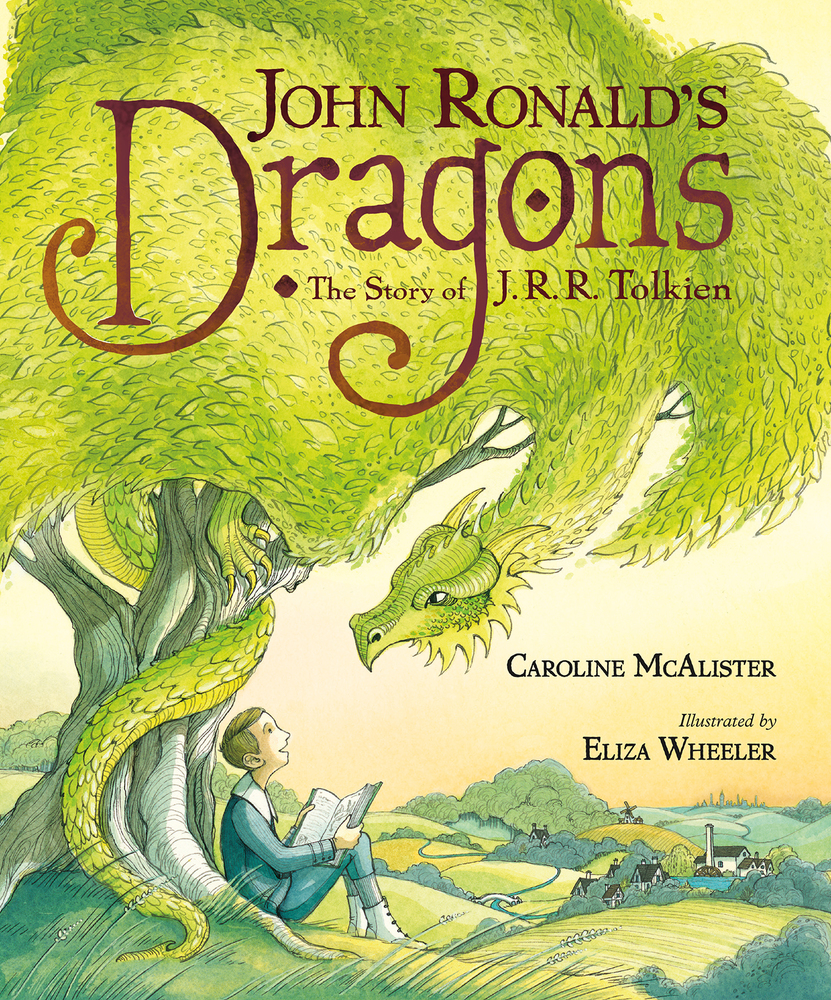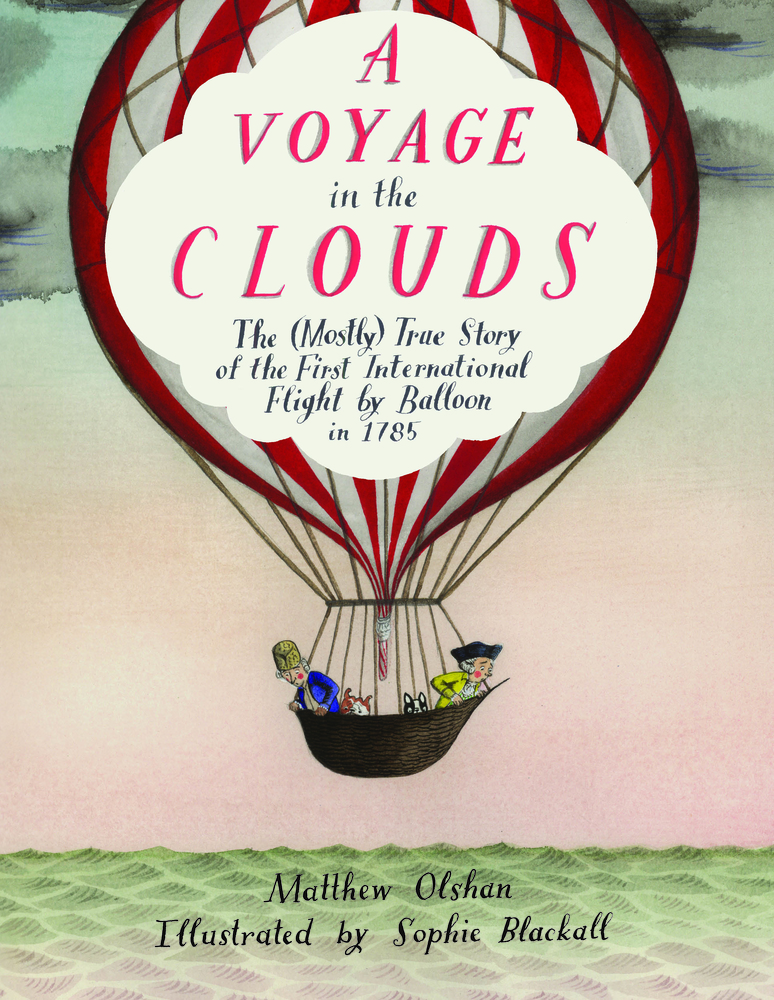Biography
There are many ways to tell the story of a real person.
Picture books generally tell of one eventful time in a person’s life, as Olshan
does in A voyage in the Clouds.
Because they are usually designed for children, some picture books tell more
about the person in question, including background on the childhood. Barnum’s Bones by Tracey Fern does a
particularly good job of this. Many picture books use a small amount of text
but others use a great deal of text and are really written for older readers,
even though there are pictures to go with the story. Some picture book
biographies embellish the story to make it interesting and engaging for young
readers. Olshan gets away with this because he gives more faculty information
in his notes section and he makes clear which parts are conjecture on his part.
Others use only the known facts, but still tell the story in a way that is
engaging and keeps the attention of young readers. Whether you like a wordy,
informative book, or a more low-key book that gives just enough information to
whet your appetite for more, you will find something to like in this latest
collection from MacMillan. I would just remind the publisher and editors at
MacMillan: there are historical figures that are not white and male. Let’s have
a few of their stories next time.
Listen: How Pete
Seeger Got America Singing by Leda Schubert, Pictures by Raul Colon

Schubert gives some important information about Pete Seeger
and his life as a singer and activist. But, the information is scattered and
interspersed with song titles, making the narrative somewhat choppy. The
timeline at the end of the book gives a more linear and easy to understand
glimpse at Seeger’s life.
Newton’s Rainbow: The
Revolutionary Discoveries of a Young Scientist by Kathryn Lasky,
Pictures
by Kevin Hawkes

Chock full of ideas, anecdotes and stories about Newton’s
life, especially his years as a child and adolescent. Both his great cleverness
of mind and serendipity played a role in his becoming a world renown scholar
and scientist. Lasky is wordy and gives example after example of how Newton
made his discoveries and why these discoveries are important to the world of
science and technology. While presented in a picture book with lavish drawings
on every page, this is not for the younger readers, but rather a super resource
for intermediate readers who yearn to learn more about science and the greats
within the field.
Barnum’s Bones: How
Barnum Brown Discovered the Most Famous Dinosaur in the World
by Tracey Fern, Pictures by Boris Kulikov

From the first page with a description of how Barnum Brown
got his name, Fern has captured my attention and I am sure she will capture the
attention of child readers, especially those who are interested in
paleontology. Barnum Brown is a fascinating character and both the words and
pictures work seamlessly together to tell his story in an engaging way. Imagine
the two page spread where Fern describes searching for dinosaur bones in the
badlands of Montana. It is October and growing cold. Barnum packs up his bones
on a wagon to be carted 130 miles to a train. “Along the way, Barnum couldn’t
resist collecting some interesting leaves and what he thought might be four
ancient crocodile skeletons, too.” And the illustration shows him striding
behind a wagon piled high with bones, cloaked in a full length fur coat, with
the skeletons of several crocodiles tucked under his arm. What a picture for
the imagination to run with!
Vivaldi and the
Invisible Orchestra by Stephen Costanza

Given the title, I imagined that this book would be a
partial biography telling about an event in the life of Vivaldi, the composer.
Had I paid more attention to the cover illustration, I might have had a better
idea of how this story would go. Basing the book on some true events, the
author has improvised a tale that tells of the possible author of four sonnets
that go with Vivaldi’s renown piece of music, “The Four Seasons.” While the
story is somewhat fanciful, it is also full of facts about Vivaldi and his
practice of writing music for a group of female orphans who performed his music
hidden behind a curtain. There is also information here about the practice of
copying musical scores by hand.
John Deere, That’s
Who! By Tracy Nelson Maurer, Illustrated by Tim Zeltner

Who hasn’t heard of John Deere? While many of us have heard
of the company and know what a John Deere tractor is, few know the story of the
original John Deere or how he invented a plow that would work well in
mid-western farmland. The story of a resourceful man who used his observation
of the world and his knowledge of blacksmithing to invent a tool to make
farmers’ lives better. What could be better than that!
John Ronald’s Dragons:
The Story of J. R. R. Tolkien by Caroline McAlister,
Illustrated by Eliza
Wheeler

As a young orphaned boy, living with an unfriendly aunt,
John Ronald dreamed of dragons. Years later, as a professor at Oxford, his mind
once again turned to dragons and he began writing stories, including The Hobbit and The Lord of the Rings. The Author’s Note adds more details about
Tolkien’s early life as well as details about his writing of his most famous
works. Wheeler has given us realistic drawings of Tolkien as a boy, which
alternate with the fanciful pictures of the dragons in his imagination.
Throughout, the use of lush colors adds to the appeal of this book.
A Voyage in the Clouds:
The (Mostly) True Story of the First International Flight by Balloon in 1785
by Matthew Olshan, Illustrated by Sophie Blackall

In 1875, Dr. John Jeffries and Jean Pierre Blanchard
successfully crossed the English Channel in a hot air balloon. As Olshan tells
the story, there was disagreement from in incept and they barely made it across
the channel with their two dogs, Henry and Henri. The Author’s Note gives
insight into which parts are factual and which are things that he has surmised
from reading the accounts of the day. Blackall uses cartoonish faces and dark
colors to represent the two men on their eventful voyage.
Thanks to MacMillan for providing these books.









